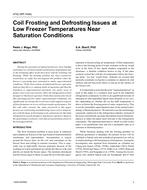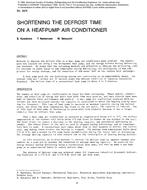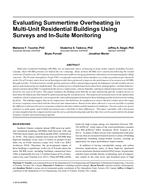A generic component-based model is developed for large electrically-driven chillers. Models of components of the chiller plant are developed on first principles and accepted empirical relations formulated to be valid over a wide range of operating conditions. For the illustrated case, components include a single-stage centrifugal compressor with capacity controlled by inlet guide vanes, shell and tube evaporator and condenser, and counterflow cooling tower cells with variable speed fan. Each component model is calibrated using one or more physically meaningful parameters to achieve good match between measured and modeled performance. The chiller model is able to predict input power at specified capacity andoperating conditions. A tricubic is fit to the solutions obtainedover a wide range of cooling water temperature and capacity, with RMSE of about 1% to permit fast performance evaluations of subsequent optimization. A plant model that simultaneously solves the chiller tricubic model and the cooling tower effectiveness-NTU model is then used to determine the optimal control settings for any given load and wet bulb temperature.
To illustrate the impact that water use can have on plantoperating cost, an year’s operational data was obtained for one of four 2500 ton chillers of a district cooling plant situated in AbuDhabi (UAE). Model-based control is developed for this typical district cooling plant and its operation is assessed with and without water cost included in the objective function. Combined annual electricity and water costs are determined for
1. the system as it was operated
2. optimal control considering only electricity cost
3. optimal control considering both electricity and water cost
Citation: 2020 Winter Conference, Orlando, FL Technical Papers
Product Details
- Published:
- 2020
- Number of Pages:
- 20
- Units of Measure:
- Dual
- File Size:
- 1 file , 2.4 MB
- Product Code(s):
- D-OR-20-010


